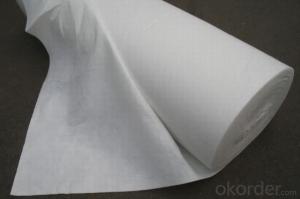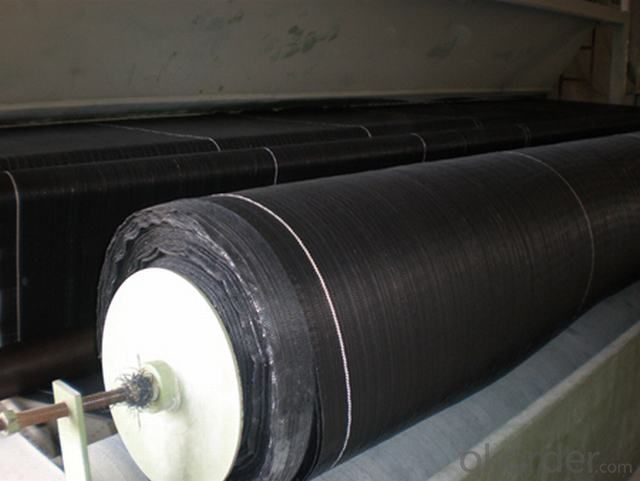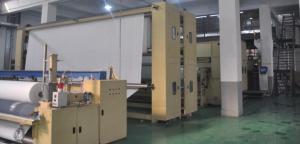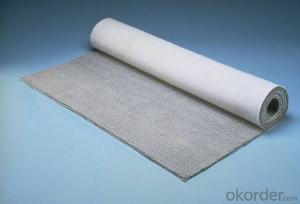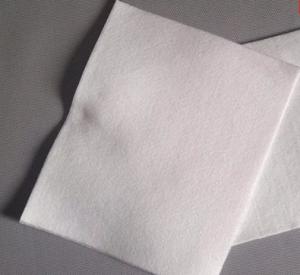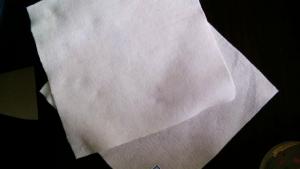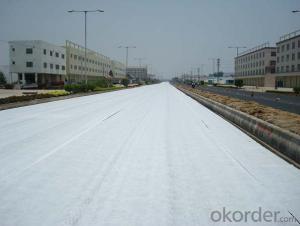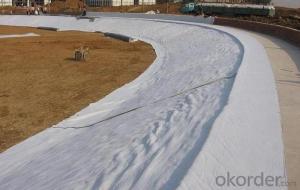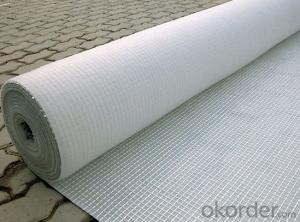Needle Punched Polypropylene Nonwoven Geotextile Tube
- Loading Port:
- Qingdao
- Payment Terms:
- TT OR LC
- Min Order Qty:
- 20000 m²
- Supply Capability:
- 1500000 m²/month
OKorder Service Pledge
OKorder Financial Service
You Might Also Like
Needle Punched Polypropylene nonwoven Geotextile:
| |
Technics | Needle Punched Nonwoven |
Material | 100% PET/cotton/PP/Viscose or customized |
Shape | Pre-cut sheet & Roll |
Production | 1,000 tons per month |
MOQ | 3tons |
Color & Design | any color & design as your requests |
Width | 0.1m-3.4m |
Gram Weight | 50g/sm - 1000g/sm |
Using Area | Agriculture, Health Care, Medical Treat, Package, Clothes, Car, Geotechnique& Building,etc |
Packing, Capacity and Delivery Time of Needle Punched Polypropylene nonwoven Geotextile: | |
Packing | Rolls in polybag with vacuum package or as customer request |
20' FT | 5-6 tons |
40' FT | 10-11tons |
40' HQ | 12-14 tons |
Terms of Payment: | T/T: 14 days after receive advance payment |
LC at sight: 14 days after receive conformed L/C | |
The Property of Needle Punched Polypropylene nonwoven Geotextile:
1.Color & Design can meet your needs of any kind
2.High degree of uniformity both on color & thickness
3.High thermostability
4.High gas permeability
5.High intensity & flexity
6.High color fastness & no fade
7.Phozy good & touch well
8.Anti-bacteria, moth-proof, anti-corrosion
9.Eco-friendly & biodegradable,reusable
- Q: How do geotextiles contribute to climate change adaptation?
- Geotextiles contribute to climate change adaptation by providing effective solutions for erosion control, slope stabilization, and flood prevention. By reinforcing soil and preventing erosion, geotextiles help to protect vulnerable areas from the impacts of climate change, such as increased rainfall and extreme weather events. They also aid in water management by reducing sediment runoff and improving overall drainage systems. Additionally, geotextiles can be used in the construction of green infrastructure, such as permeable pavements and green roofs, which help mitigate urban heat island effects and improve stormwater management. Overall, geotextiles play a crucial role in enhancing resilience to climate change impacts and promoting sustainable development.
- Q: How do geotextiles help in reducing soil erosion caused by wind?
- Geotextiles help in reducing soil erosion caused by wind by acting as a physical barrier, preventing the soil particles from being lifted and carried away by the wind. The geotextiles are placed on the soil surface, effectively trapping the soil particles and allowing water to pass through. This helps to stabilize the soil, preventing erosion and promoting vegetation growth.
- Q: How do geotextiles help with reinforcement of steep slopes?
- Geotextiles help with the reinforcement of steep slopes by providing stability and preventing erosion. They are placed within the slope to act as a barrier, holding the soil in place and preventing it from sliding or washing away. Geotextiles also allow for water drainage, reducing the chance of saturation and further erosion. Overall, they enhance the strength and durability of steep slopes, making them more resistant to natural forces such as gravity and rainfall.
- Q: What is the geotextile material?
- Geotextile is made of staple fiber polyester, polypropylene, polyester filament, PP flat silk and other synthetic fibers through acupuncture or weaving made of geotextile, non-woven and industrial non-woven products in one. The general width of 1-6 meters, roll length of 50-100 meters, the quality per unit area of 100-600 grams square meters. According to the different production processes are: polyester / polypropylene staple acupuncture geotextile, PP flat wire woven geotextile, polyester spunbond filament geotextile, single double-sided thermal composite impermeable geotextile, woven geotextile and so on.
- Q: What are the factors to consider when installing geotextiles?
- When installing geotextiles, there are several factors to consider. These include the site conditions, the type and quality of the geotextile material, the required strength and permeability characteristics, the installation method, and the long-term performance expectations. Additionally, factors such as the potential for soil erosion, the presence of groundwater, and the desired lifespan of the geotextile should also be taken into account. Proper consideration of these factors ensures that the geotextiles are installed effectively and provide the desired benefits for the intended application.
- Q: Garage roof covered with non-woven or geotextile cloth
- Geotextile also known as non-woven fabrics, with 200 to 300 grams of short wire geotextile can be
- Q: Are geotextiles suitable for use in mining tailings containment?
- Yes, geotextiles are suitable for use in mining tailings containment. They provide effective filtration and separation of fine particles, preventing their migration and reducing the risk of environmental contamination. Additionally, geotextiles offer excellent durability, resistance to chemicals, and stability, making them ideal for containing and managing mining tailings effectively.
- Q: Can geotextiles be used in the protection of groundwater sources?
- Yes, geotextiles can be used in the protection of groundwater sources. Geotextiles are permeable fabrics that can effectively filter out impurities and prevent soil erosion. By installing geotextiles in areas where groundwater sources are vulnerable to contamination or excessive sedimentation, they can act as a barrier, allowing water to pass through while trapping pollutants and preventing them from reaching the groundwater. This helps to maintain the quality and purity of groundwater sources, ensuring their long-term protection.
- Q: What are the standards and regulations governing geotextiles?
- Geotextiles are governed by various standards and regulations to ensure their quality, performance, and safety. Some of the key standards include ASTM D4355, which defines the classification system for geotextiles based on their functions and characteristics, and ASTM D4595, which specifies the test methods for determining the properties of geotextiles. Additionally, regulations such as the American Association of State Highway and Transportation Officials (AASHTO) and the Federal Highway Administration (FHWA) provide guidelines for the use of geotextiles in transportation projects. These standards and regulations aim to promote consistency, reliability, and effectiveness in the use of geotextiles for various applications.
- Q: What are the different factors to consider for geotextile selection in landfill applications?
- When selecting geotextiles for landfill applications, several factors need to be considered. These include the type and composition of waste materials being disposed of, the anticipated loads and stresses on the geotextile, the required filtration and separation properties, the site's environmental conditions, and the desired service life of the geotextile. Additionally, factors such as installation methods, cost-effectiveness, and compliance with regulatory requirements should also be taken into account during the selection process.
Send your message to us
Needle Punched Polypropylene Nonwoven Geotextile Tube
- Loading Port:
- Qingdao
- Payment Terms:
- TT OR LC
- Min Order Qty:
- 20000 m²
- Supply Capability:
- 1500000 m²/month
OKorder Service Pledge
OKorder Financial Service
Similar products
Hot products
Hot Searches
Related keywords

